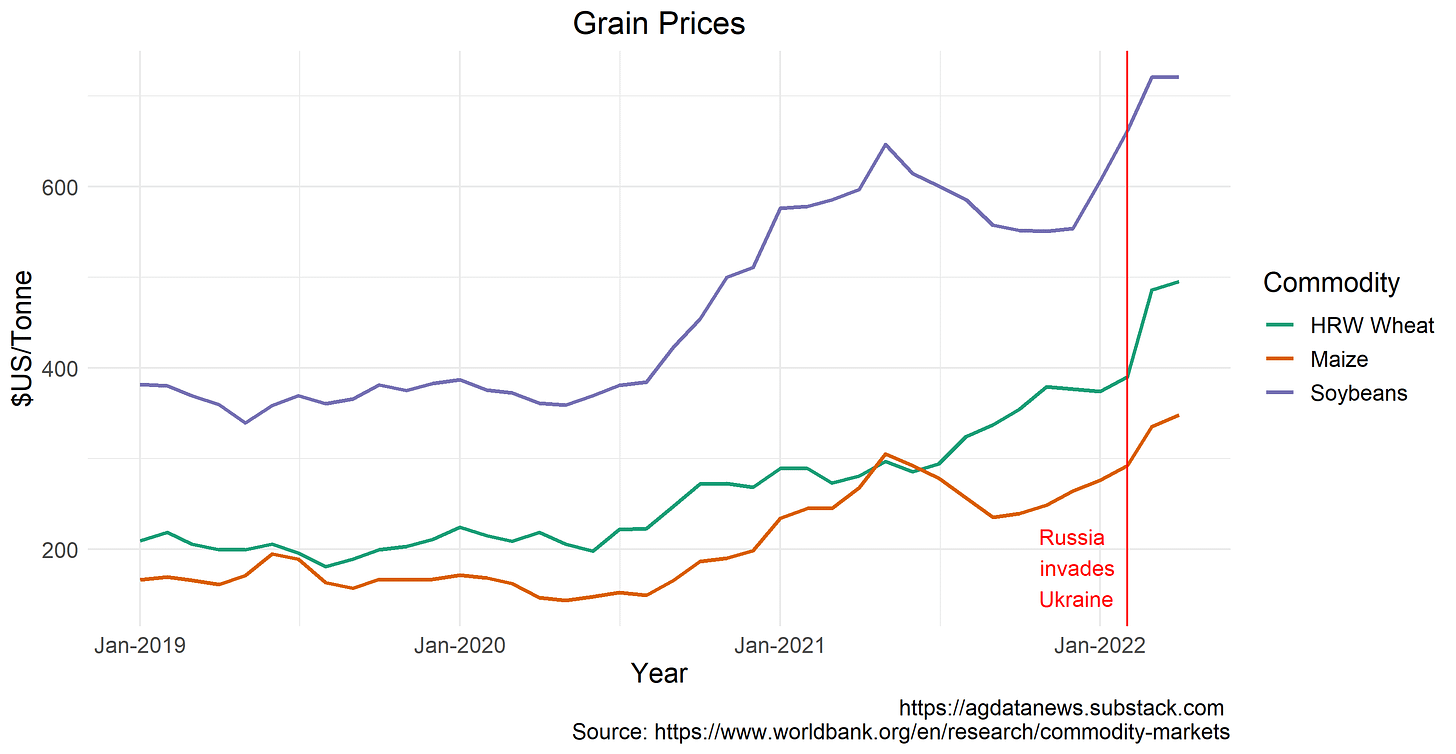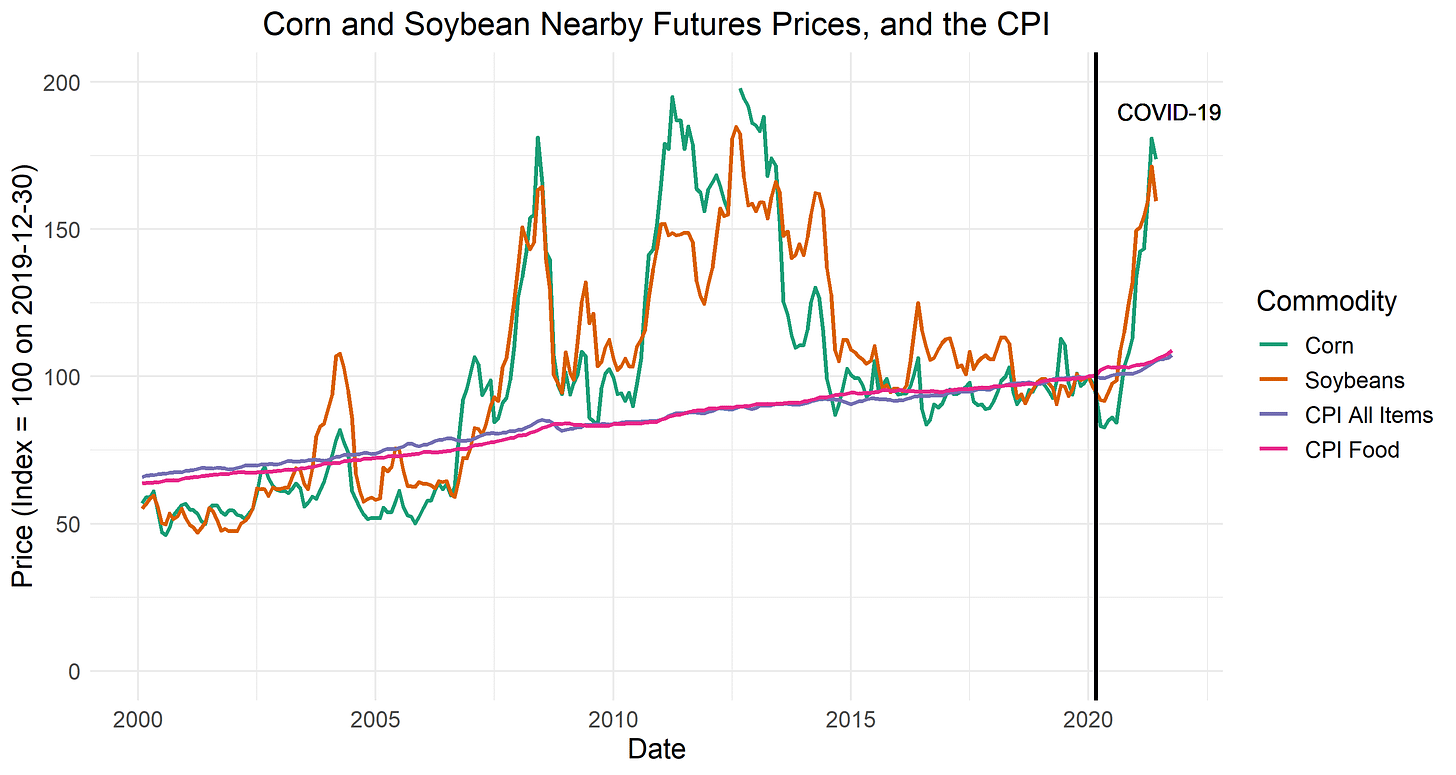Was I Wrong About the Global Food Crisis and Inflation?
On May 20, 2020, I posted my first Ag Data News article. In the ensuing two years, I've published 108 articles, some written by graduate students and all using data to illuminate a point.
I'm mostly happy with the articles, but there are some things I wish I'd written differently. No, I'm not referring to my obviously correct points that KFC makes the best chicken sandwich and daylight saving is good.
I realized what bothered me about some of my articles when I heard Jerusalem Demsas explain to Josh Barro why so many people made wrong predictions about how COVID-19 would affect the economy. Demsas noted that when analysts approach an issue as a "balancer," they emphasize what is wrong with what others are saying and can lose sight of what is right.
When people view themselves as “balancers” in a dialogue versus trying to find the correct answer, it can create a lot of problems .... it can often make it hard to change your mind — Jerusalem Demsas
This point immediately made me think of two Ag Data News articles:
We're Not Facing a Global Food Crisis (March 9, 2022)
Don't Worry About Food Price Inflation (May 19, 2021)
The first is by far my most read Ag Data News article. Even now, more than two months later, it gets a couple hundred readers per day. I stand by everything I wrote in that article, yet I'm increasingly uncomfortable asserting that there is no global food crisis.
I argued that Russia's invasion of Ukraine had big but not historic effects on food commodity markets. I argued that the US should not respond by incentivizing additional production, in large part because the proposed measures would do little to alleviate the pressure in winter wheat markets. This year's winter wheat crop was already planted.
I also noted that the transition may be difficult in some places, especially countries such as Egypt that typically rely on wheat from Russia and Ukraine. Helping such countries find alternate suppliers would be better policy than paying US farmers to go back six months in time and plant more wheat.
My argument about the incremental effect of the invasion overlooks the fact that food commodity prices are high right now. The FAO real food price index had exceeded its 2008 and 2010 highs before the invasion. It rose by 44% between June 2020 and February 2022, and it increased another 15% after the invasion. By itself, Russia's invasion was not a historic shock to food commodity markets, yet an array of shocks over the past two years have conspired to push food prices to high levels.
Does this constitute a food crisis? I don't know and hope to write about it soon. But, by inadvertently framing my article as a balance against claims that Russia caused a food crisis and therefore the US should send money to farmers, I backed myself into an argument that there is no food crisis in the world.
Perhaps I should have titled the article "What is the Effect of Russia's Invasion on Food Commodity Markets and What Should the US Do About It?"
In the second article where I acted as a balancer, I urged readers not to worry about food price inflation. That no longer reads like good advice.
But what was my article really about? I was reacting to concerns that a 44% increase in the price of corn was about to cause high prices in the grocery store. I pointed out that the prices of food commodities like corn and soybeans are much more volatile than consumer prices. This is partly because most of the price of food is determined by the cost of processing, packaging and marketing and partly because most corn and soybeans go to feed animals or cars.
I noted that even small food price increases can seriously affect low-income households. I also gave the caveat that I had nothing to say about the general inflation outlook other than the Federal Reserve had the tools to address it and appeared to be paying attention. But all these points get lost because I said there wouldn't be inflation and there was.
Perhaps I should have titled the article "Big Commodity Price Changes Don't Imply Big Grocery Price Changes," or "Most of the Price of Food is Processing, Packaging and Marketing".
So, I'll end year 2 of Ag Data News with a note to self: beware of the balancer trap.
One way to do this is to write positive titles. State what I think is true based on the data rather than what I think is not true.
You can generate the graphs in this article using this R code (food crisis) or this R code (inflation).






